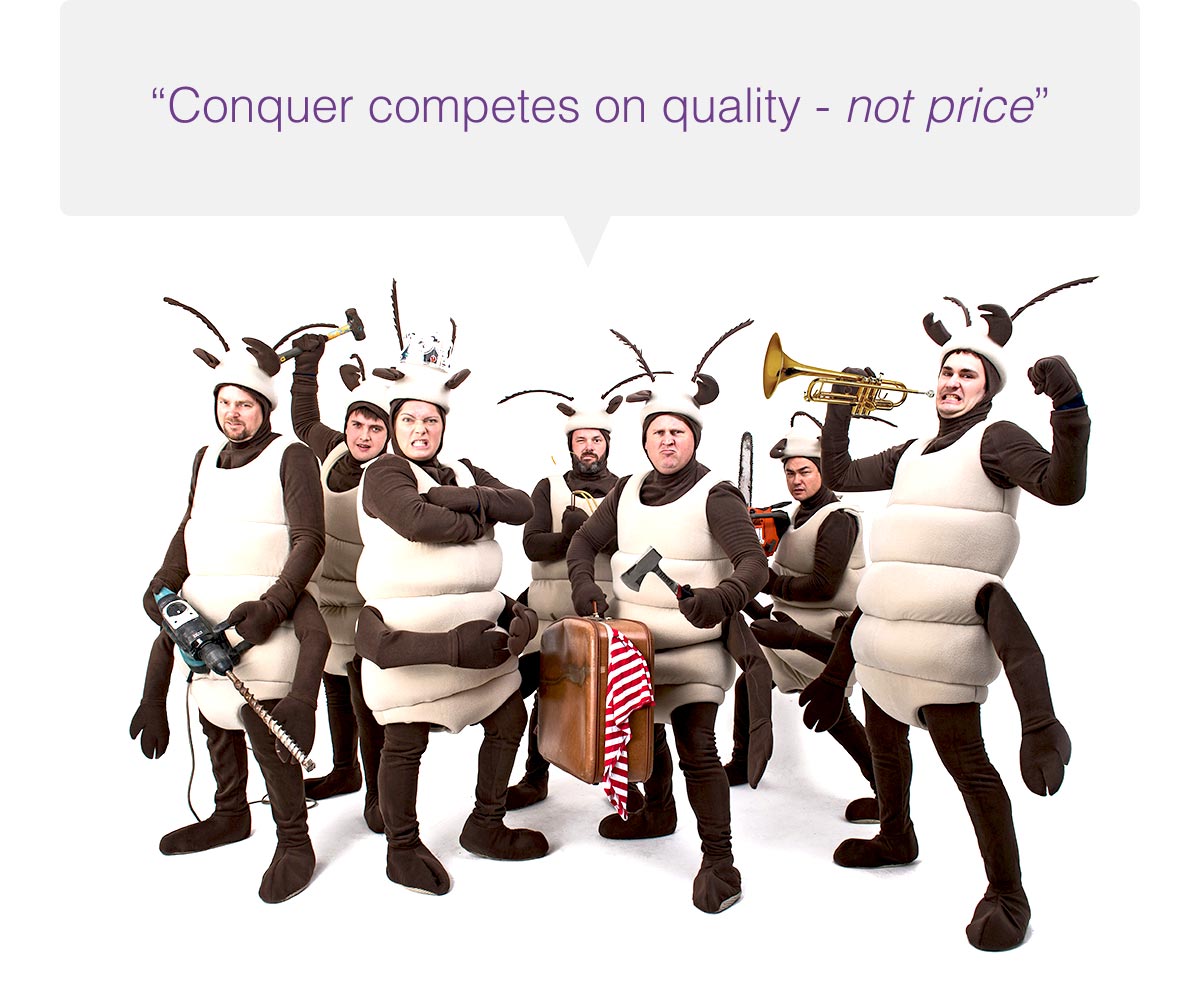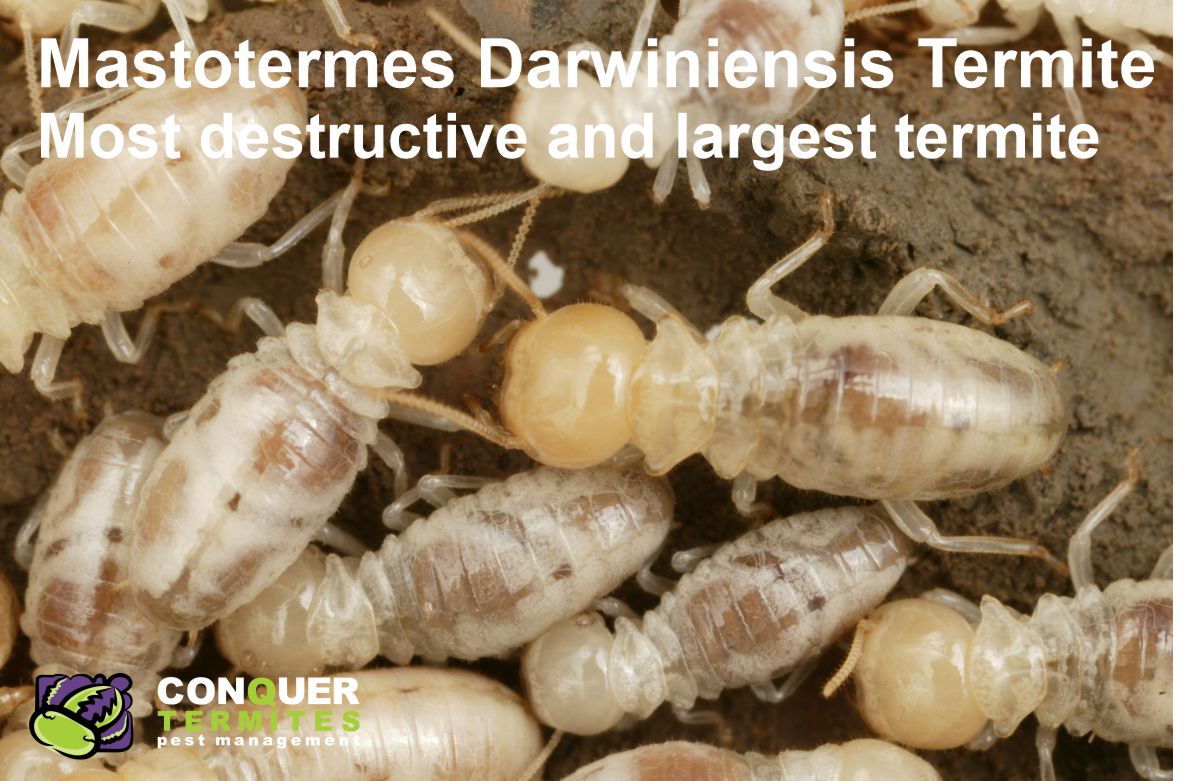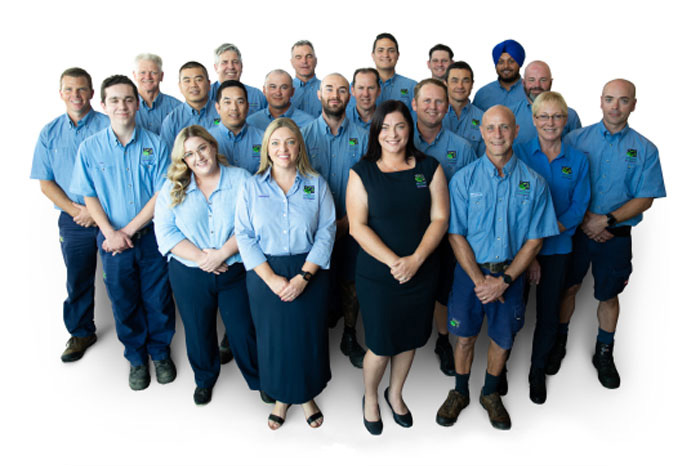Which termites damage the most homes in Brisbane
Termites are a significant problem in Australia, causing over 5 billion dollars in damage yearly. There is no such thing as good or bad termites, especially if they are attacking your home.
But some termites will chew more than others, depending on the size or maturity of the colony, the type of termite and the surrounding environment.
Most Destructive Termite in Australia
The most destructive species in Australia is Mastotermes Darwiniensis, known as “The Giant Termite”.
Luckily for Brisbane and Gold Coast homeowners, this termite is limited to Northern Queensland’s tropical regions. You don’t see them usually past the Tropic of Capricorn - from Gladstone, Qld.
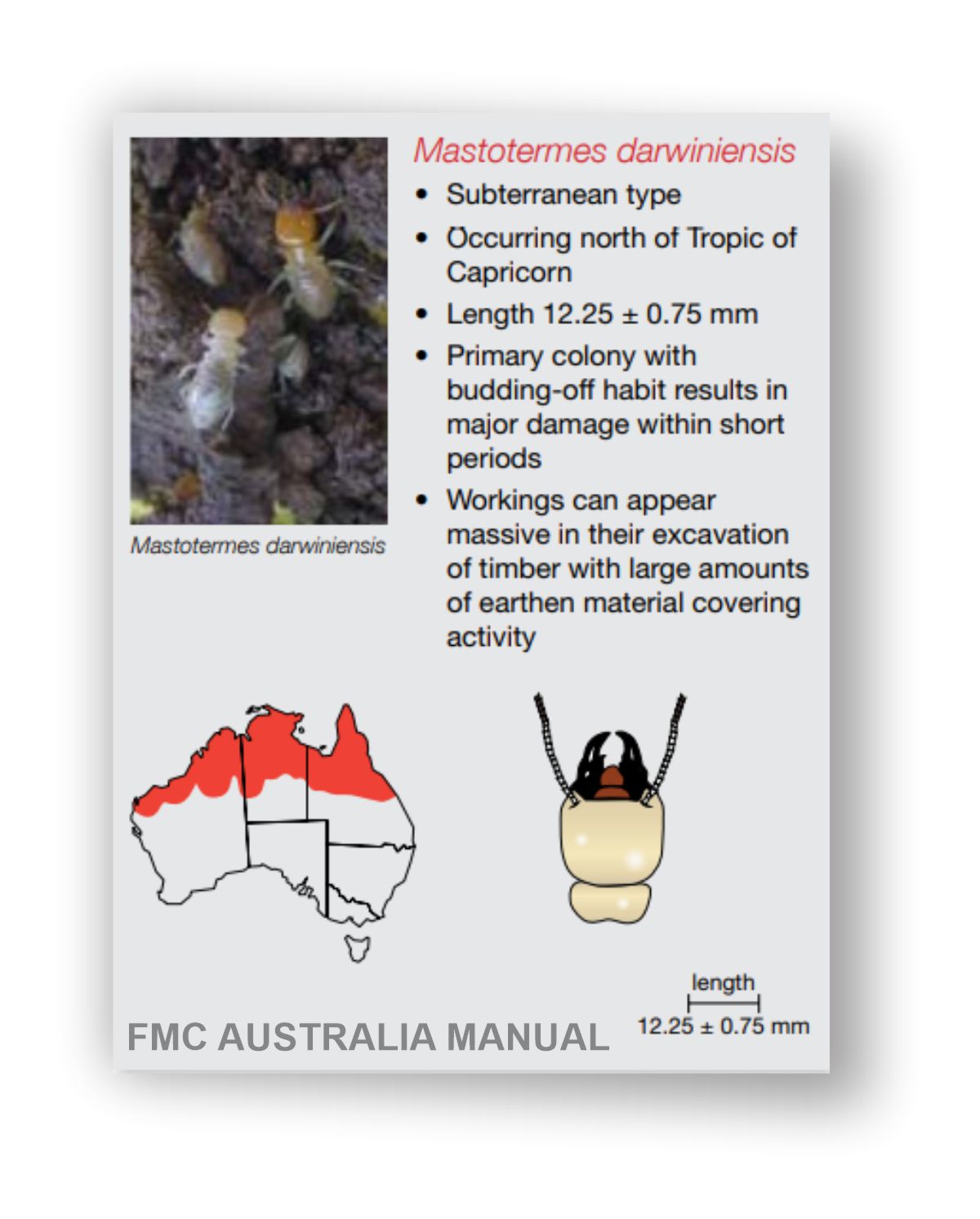
The discovery of Mastotermes Darwiniensis termites on the Gold Coast has been reported, but this would appear to be isolated and they probably travelled down with landscape soils and plants.
What termites destroy the most wood in houses?
The winners are…
- Coptotermes
- Schedorhinotermes
- Nasutitermes
The common theme of these three types of termites is that their colony can grow to large numbers, and they’re socially more organised (to eat your home).
Top 3 Most Destructive Termites in Brisbane
1. Coptotermes is the one you don’t want to be attacking your home. This subterranean termite is the most common in South East Queensland and is responsible for most of the termite damage in Australia. The colony can grow very large with many mouths to feed. They are the termites that emits a ‘milky’ substance when attacked.
They do not require soil contact, allowing them to nest in structures that offer a constant supply of moisture (leaky pipe or shower tray). We have found them 11 floors up in a bathroom of an apartment building in West End, Brisbane!
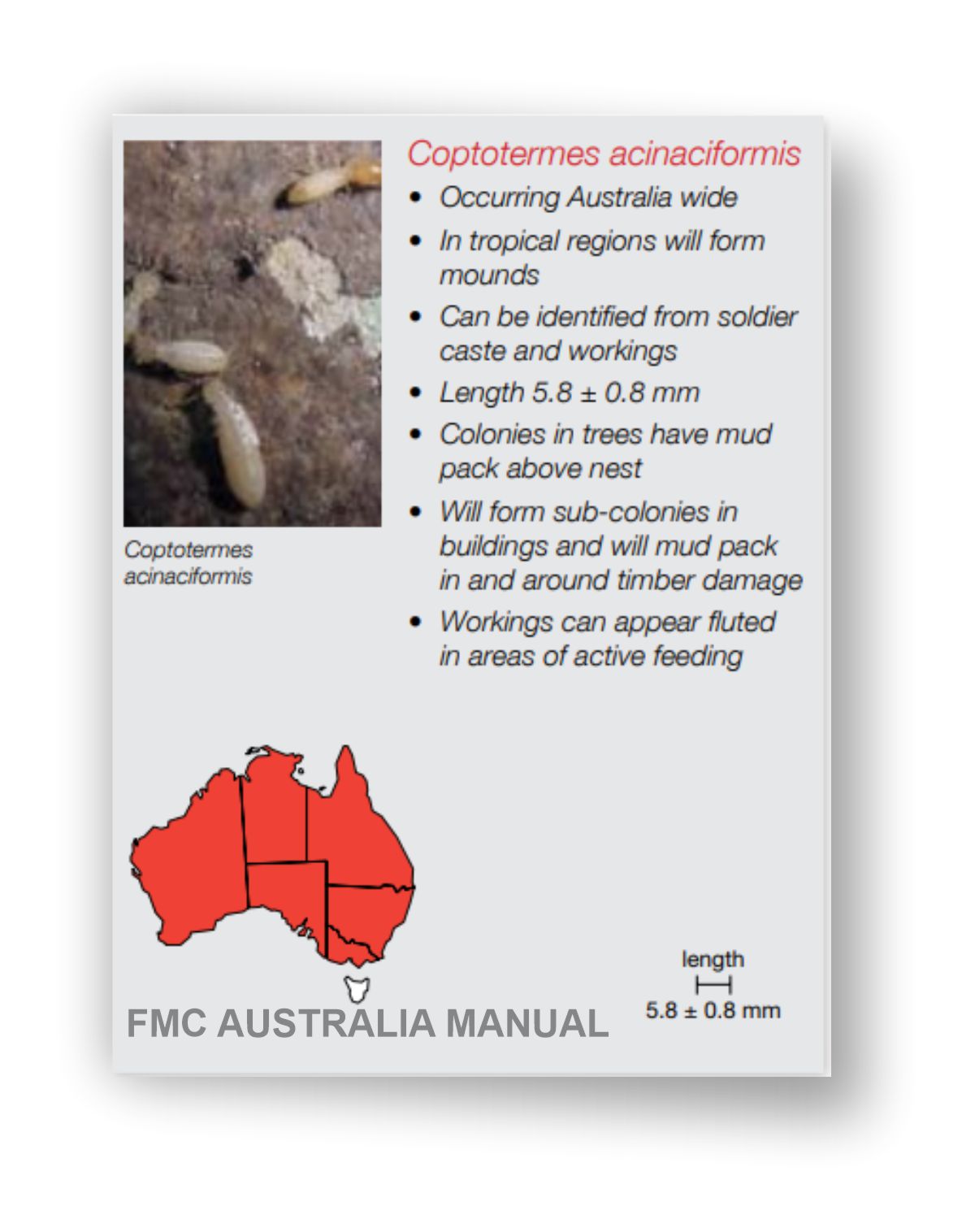
2. Schedorhinotermes is commonly found along the eastern coast of New South Wales and Queensland and throughout the rest of the country. They are identified by their two soilder castes: major and minor. They tend to nest in tree stumps, eucalyptus trees, and retaining walls.
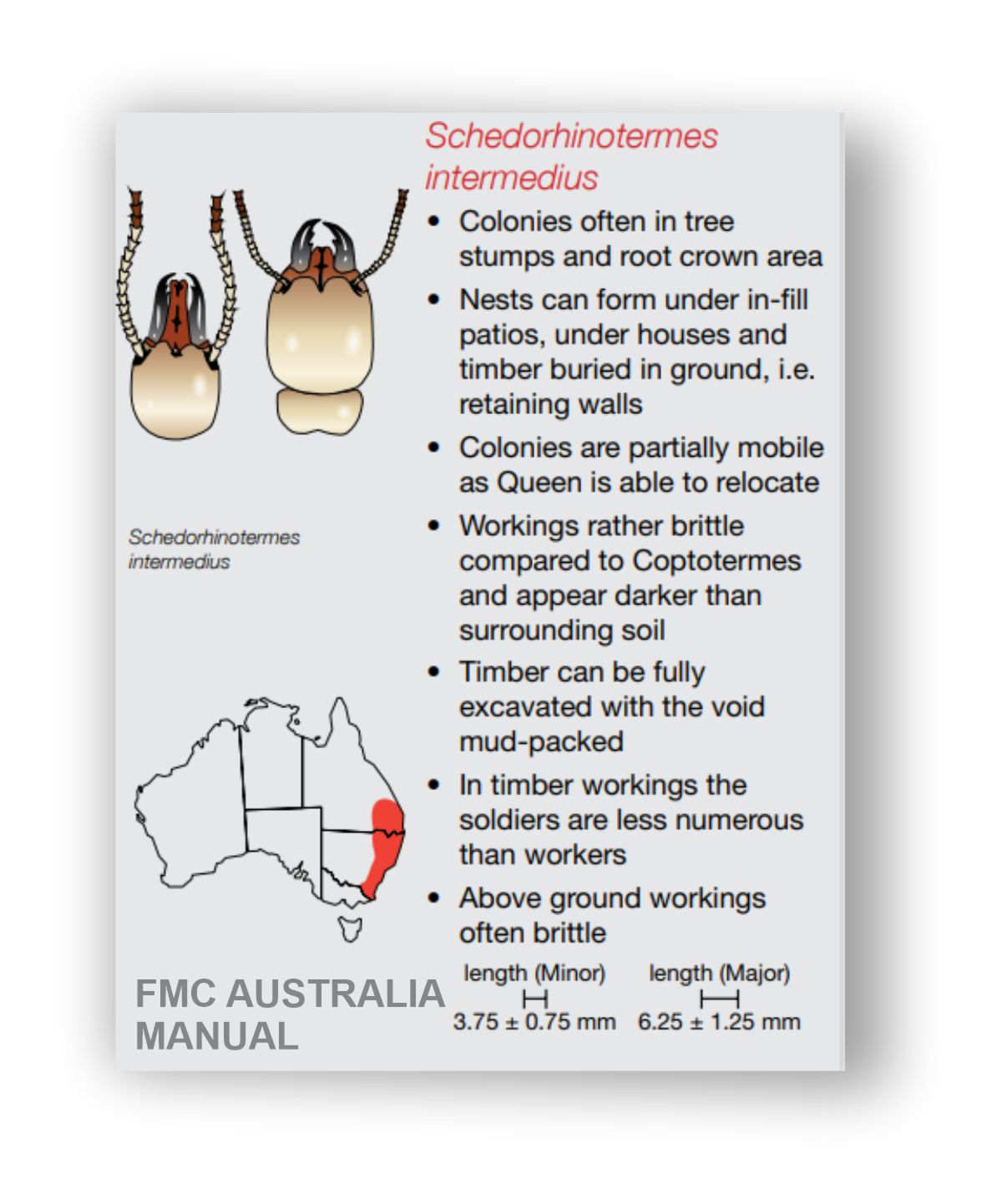
Most scarily, they can have multiple nurseries with separate breeding Queens. So you think you have killed the nest but there might be several other connected nests waiting to recolonize.
3. Nasutitermes. The ‘pointed’ head and large size of the Nasutitermes soldier make it the easiest to identify. Some believe this type of termite to be the most destructive of structural timber. Nastitermes might not be as common in Brisbane as the above two, but if they do enter your home they will eat the most!
They also prefer hardwood timber frames (eucalyptus - gum trees). Read about termites and hardwood.
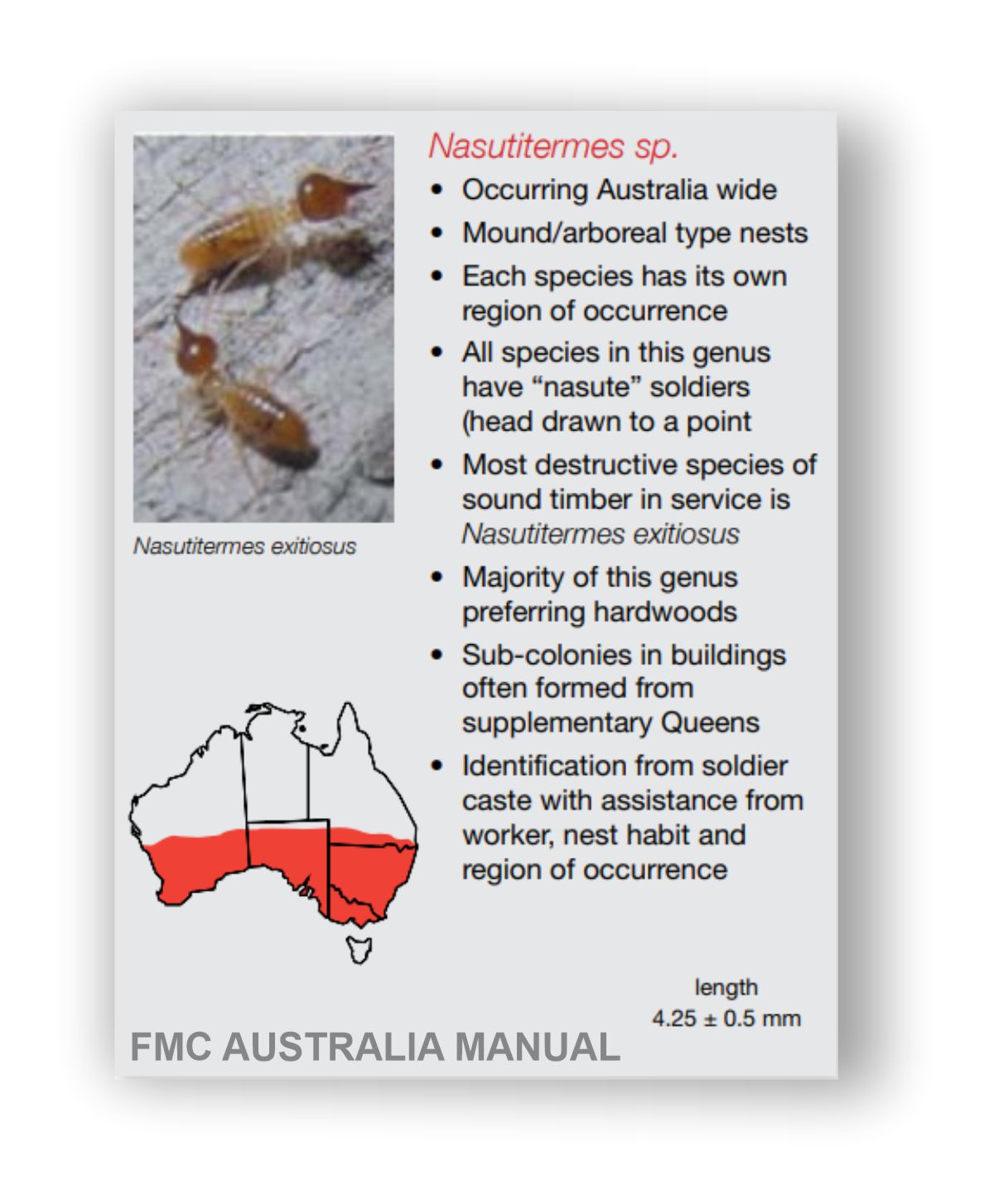
Nasutitermes termites build large arboreal nests in the forks of trees. This is a sign that the nest is mature and expanding.
The arboreal part of the nest on the outside of the tree is generally connected to other parts of the colony in the tree’s root crown. Their shelter tubes are easy to see, and they are dark brown to black and can be seen on the outer part of the trunk.
Why do termites eat wood?
Termites find timber really yummy and have perfected the art of converting wood to sugars. They are one of the most amazing organisms on our planet to organise their whole tribe to forage and select wood to cart back to their nest through their subterranean tunnels.
Termites Kryptonite
How can termites eat wood? They have developed a digestive system that has particular microorganisms and protozoa (enzymes) that consume the cellulose (wood), creating a by-product of glucose (sugars), normally as they walk back to the nest.

If they didn’t have this symbiotic relationship with this protozoan in their gut, they wouldn’t survive.
Protozoa are a group of single-celled eukaryotes, either free-living or parasitic, that feed on organic matter such as other microorganisms, organic tissues, and debris. Wikipedia
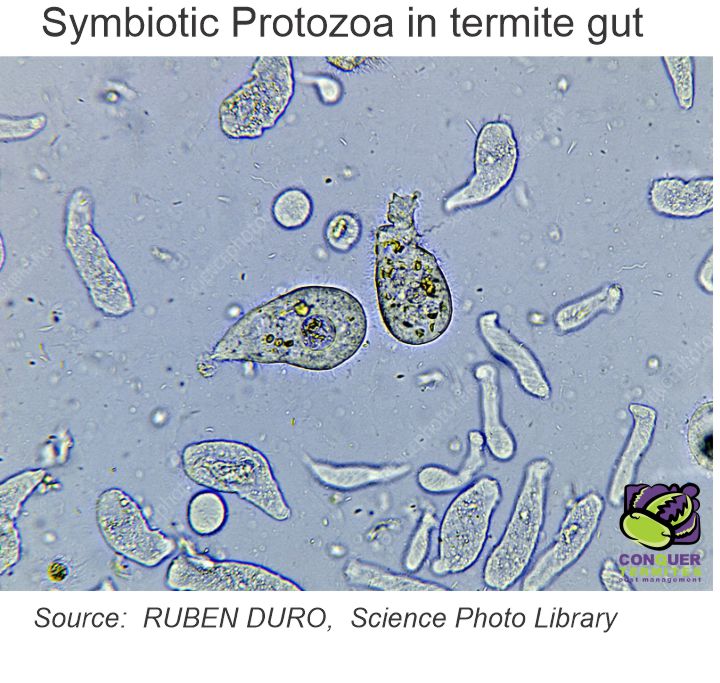
Protozoa are one-celled animals found worldwide in most habitats. Most species are free living, but all higher animals are infected with one or more species of protozoa. Infections range from asymptomatic to life-threatening, depending on the parasite’s species and strain and the host’s resistance.
Cows eat grass; Termites eat wood.
By consuming wood, termites have access to a source of cellulose that most other creatures do not. Cellulose is a major building block of plants and nature’s most common organic compound. Cellulose can be found in wood, grass, paper, cardboard, cotton, books, magazines, and more.
There is a lot of timber in your house.
The latest data from a long-running FWPA project demonstrates that Australia’s average one- and two-storey detached house used 14.58 m3 of wood (2017-18).
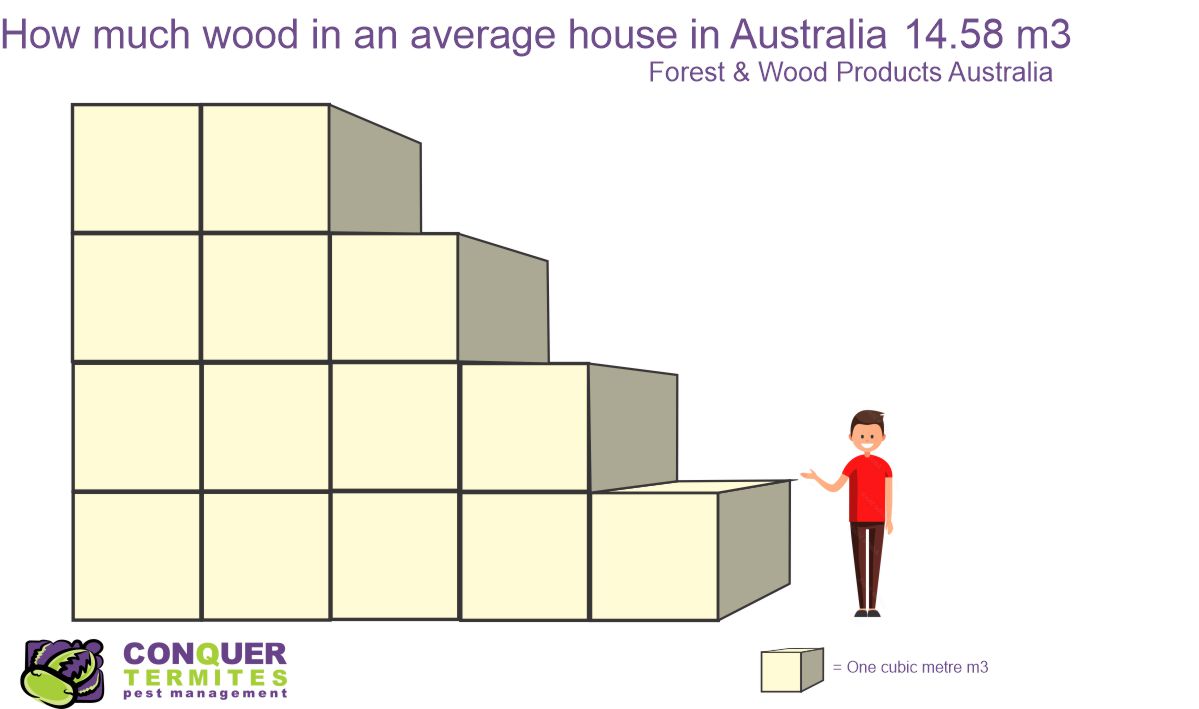
Once the termites have determined a timber structure above them, they will build subterranean tunnels from their nest to gain concealed entry. For them, your house is the trophy tree!
Termites eat hardwood too.
Termites will eat all types of timber, but they are super clever in sourcing the wood with the most desirable nutrients and cellulose. It’s all about efficient foraging and a balanced diet for the colony.
A big mistake Australian homeowners make is thinking their home is constructed with hardwood, when in fact, it is just plantation eucalyptus (gum trees). Yes, it is considerably harder than radiata pine, but it is highly desirable timber for termites to eat.
Eucalyptus timbers have been found to be the most effective wood to use in bait stations to attract termites. Not saying your home is a big bait station, but it is the ultimate feeding Buffett for termites.
What should you do?
- Get yearly termite inspections done.
- Ensure there is a current termite management system in place
- Get any large eucalyptus tree drilled and checked.
- Check there are no moisture issues affecting the frame and roof timbers.
- Stay vigilant - check yourself - call Conquer Termites if you suspect an issue.
